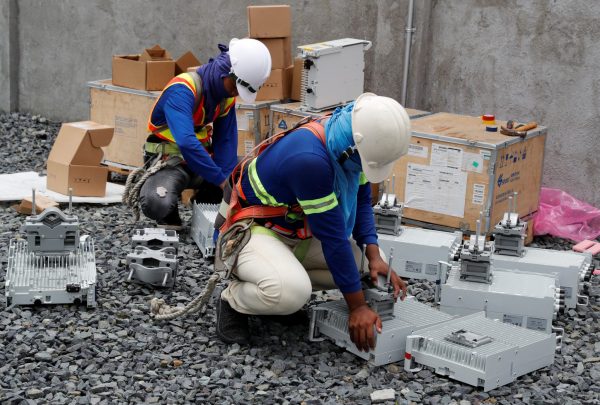Some studies suggest more than half of all Filipino households are vulnerable to future poverty.
Past and current governments have tried to increase both manufacturing and infrastructure development in an effort to tackle poverty through job creation. Over half of the government’s 75 flagship projects up to 2022 have been approved. Expenditure for over 2000 other infrastructure projects will be financed from a mix of modalities, the bulk being financed locally.
Emerging technologies of the Fourth Industrial Revolution, such as artificial intelligence, the Internet of Things, big data, and 3D-printing are game changers for the Philippines’ medium-and long-term development plans. But while technology leads to opportunities for productivity growth, such disruptions in business models also herald uncertainty and may have unintended consequences. Nobel laureate Joseph Stiglitz warns that current inequalities can become larger as capacities to reap benefits from these technologies are uneven.
In its 2018 Asian Development Outlook, the Asian Development Bank suggests that the jobs created by rising domestic demand in developing Asia from 2005–15 were offset by jobs lost due to automation. There is no assurance that these trends will continue. An International Labour Organization study suggests that, over the next decade, close to half of all employment opportunities in the Philippines are at high risk of automation. Women and workers with primary school education, or less, are most at risk.
While technology is affecting jobs, this does not mean that technology is completely replacing labour. Not every task can be automated. The introduction of automated teller machines did not eliminate bank tellers, but rather increased jobs that required customer relations skills. Technology can also complement labour. While the risks of machines substituting human labour are overstated, there is also widespread recognition that some portion of current jobs will be displaced, and that this will likely increase inequality.
So is the Philippines ready to navigate future job market disruption? In an assessment of the structure and drivers of production in 100 countries, the World Economic Forum categorised ASEAN member states into: ‘leading’, ‘legacy’ and ‘nascent’. The Philippines was deemed a legacy country — it has a strong production base but faces future risks due to its weak performance in developing productivity drivers such as innovation and human capital.
Studies on innovation suggest an innovation paradox — despite the huge returns, firms and governments in developing countries do not innovate much. Countries struggle to catching up because of their lack of complementary factors to research and development (R&D) investments, such as hard and soft infrastructure and human resources. As articulated in a World Bank report on innovation policy, governments should instead be like a good gardener — one that prepares the ground by building up human resources, fertilises the soil by boosting R&D, waters the plants through providing financial support for innovation, and removes weeds and pests by removing obstacles to innovation.
Given that production systems evolve with technologies, human capital development requires continuous learning, as well as the ability to unlearn and relearn. To encourage this, the Philippine government needs to shift its focus on job security to ensuring income security. Some people may lack either the ability or opportunity to reach their creative potential and therefore require social protection. The costs of such social protection and human capital development can be borne by taxation reform. Recent tax reform in the Philippines is focussed on infrastructure development rather than supporting activities that will develop future preparedness.
The Philippine government is neglecting its responsibility to remove regulatory burdens to innovation. These are adding to the cost of doing business and significantly restricting trade and investment. Instead, industry regulators should consider learning from — and even replicating — the regulatory sandbox approach used by monetary authorities that work with financial technology services.
While it is difficult to predict the extent to which technologies will disrupt the future, this should not stop the Philippines from developing a policy framework and action agenda. Ultimately, the Philippines needs a whole-of-nation approach to prepare for its future.
Jose Ramon G Albert is a Senior Research Fellow at the Philippine Institute for Development Studies (PIDS).
This article is part of an EAF special feature series on 2018 in review and the year ahead.

